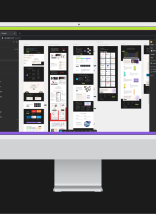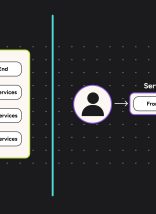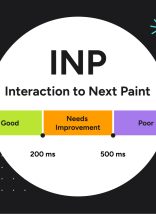As businesses improve SEO techniques over time, the competition to rank has intensified. You’ll want to rely on an SEO professional for advanced link building, site speed optimization, and well-researched keyword-optimized blog posts.
If you’ve never invested in SEO resources before, there’s a few things you can do to clean up your blog and get a jumpstart all on your own.
Our 5 SEO quick wins to optimize your blog are:
- Perform keyword research.
- Optimize URLs.
- Optimize meta tags.
- Use purposeful headings.
- Incorporate internal linking.
1. Perform keyword research.
Many of our tips include optimizing elements of your blog – but you can’t keyword optimize without performing research.
We also know that it’s not possible to keyword optimize your entire blog retrospectively. Instead, find blog posts that are already bringing in some traffic and see how you could improve. Then, implement keyword research for all blogs going forward.
Choose keywords and topic areas that you think would be a good start. Then, either plug them into Google’s keyword planner or the tool Ubersuggest (they’ll provide similar results).
Browse the suggestions for easy wins. You want to choose keywords with high search volume (at least 50 average monthly searches) and low competition. Choose 1-3 keywords for each blog post.
Now that you’ve mapped out which keywords go with which blog, you can continue optimizing the content, URLs, and meta tags.
2. Optimize URLs.
Including keywords in your URLs will definitely give you a competitive edge. However, you might not want to change the URLs of your older blog posts. You would have to implement some 301 redirects, and too many of those could slow down your website.
So for your upcoming blogs, make sure you implement optimized URL structures before publishing.
Aside from including keywords, you’ll want to balance length with relevance. There is no “end all be all” for how many characters a URL should be. As a rule of thumb, make it as short as possible while including keywords and letting users know where they are.
Using the Yoast plugin’s automated URL for this blog would have read:
atlanticbt.com/insights/try-these-5-seo-quick-wins-for-your-blog
However, we’re targeting the keyword “blog seo”, so we shortened the URL accordingly:
atlanticbt.com/insights/blog-seo
Users who see this short and relevant URL are more likely to click.
3. Optimize meta tags.
Title tags
A title tag is an element of HTML that specifies the title of an article to search engines.
A title tag should be 50-70 characters and include 1-2 keywords. It’s highly unlikely you will rank for a keyword if it’s left out of a title tag.
Many businesses also include their business name in the title tag for brand exposure.
Meta Descriptions
A meta description is an HTML element that summarizes a page’s contents in a snippet.
Your meta descriptions won’t necessarily help you rank. However, if they are compelling, they will encourage people to click through once rankings are achieved.
Meta descriptions should be 100-160 characters and include action words. That’s because users are more likely to take action if they’re told what to do! Use verbs to drive clicks – like “Explore,” “Learn,” “See how,” “Access,” “Unlock,” etc.
Alt text
Alt text is HTML code used to describe an image, typically just 1-4 words.
Make sure you train designers and content specialists to use keyword-optimized alt tags. This tag will tell search engines what an image is in your words.
It will also allow people who cannot see images (or whose browsers struggle to load images) to gain some context for what the image would be.
4. Use purposeful headings throughout your blog.
In order to rank, you need to write blog posts that are a minimum of 800 words. But your competition might be writing even longer articles. In fact, according to Hubspot, the ideal length is 2100-2000 words.
You should naturally be using your keywords throughout the content, especially if you are focusing on length.
Headings throughout your article are an even more effective place to add keywords and boost engagement by helping readers skim.
5. Incorporate internal linking.
Some of your articles might have strong backlinks that help them rank. If you link a top performing article to another page, the backlink authority will pass through.
While some internal linking could be automated with recommended article features, manually adding links can give you control of the anchor text. Using keyword-optimized anchor text can also tell Google your article is relevant to certain keywords.
Need help building a digital strategy?
From improving site performance to increasing organic traffic and eCommerce conversions, Atlantic BT is here to help you tackle your business challenges. Contact us for a free consultation with an expert.










